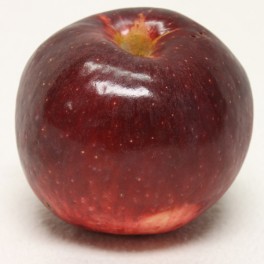Liberty Apple
The Liberty apple is a very disease resistant apple that also tastes excellent. It is crisp, juicy and keeps very well.
Excellent for: Fresh eating; Baking; Sauce
ID-73A
More info
Liberty
Dessert apple
Raised at the New York State Agricultural Experimental Station, Geneva, New York, U.S.A. It was introduced in 1978. Fruits have crisp, juicy, slightly coarse textured flesh with a good flavour. Trees are resistant to scab, cedar apple rust, fireblight and powdery mildew.
Parentage: Macoun x Purdue 54-12
Flowering time:
25th April 10% flowering
28th April Full (80%) flowering
7th May 90% petal fall
Picking time: Early October
Size: medium
Shape: Globose conical
Height: 59.41 mm
Width: 62.33 mm
Ribbing: weak-medium
Crown: medium
Ground Colour: Whitish yellow
Over Colour: Red
Over Colour Amount: high
Over Colour Pattern: striped/solid flush
Russet: very low
Greasiness: Medium
Crunch: crisp
Juiciness: juicy
Flesh Colour: White
Source: www.nationalfruitcollection.org.uk
The National Archives Open Government Licence



